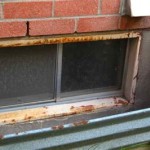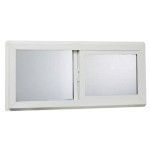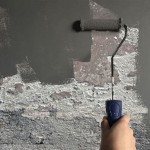How to Clean Your Basement Perimeter Drain
A basement perimeter drain, also known as a French drain or footing drain system, is a crucial component in protecting a home from water damage. Located around the interior or exterior perimeter of the basement foundation, it collects and redirects groundwater away from the building. Over time, these drains can become clogged with sediment, debris, and mineral deposits, leading to reduced effectiveness and potential flooding issues. Understanding the importance of regular cleaning and the methods involved is essential for maintaining a dry and stable basement.
The primary purpose of a perimeter drain is to intercept groundwater before it can exert hydrostatic pressure against the basement walls and floor. This pressure can lead to cracks, leaks, and ultimately, structural damage. The system typically consists of perforated pipes buried in gravel, allowing water to flow freely into the pipes and drain away to a sump pump or a suitable discharge point, like a storm sewer or a designated drainage area. Without proper maintenance, the drain's ability to perform this function diminishes, potentially resulting in costly repairs and a compromised living environment.
Recognizing the Need for Cleaning
Several indicators suggest that a basement perimeter drain requires cleaning. One of the most obvious signs is water intrusion into the basement. This can manifest as damp spots on the walls or floor, puddles of standing water, or a general feeling of humidity. It's crucial to differentiate this from simple condensation, which is more likely to occur during periods of high humidity and temperature differences between the inside and outside of the house. While condensation is a common issue, persistent dampness, especially after rainfall, strongly suggests a problem with the drainage system.
Another telltale sign is the presence of efflorescence, a white, powdery deposit that forms on basement walls. This is caused by mineral salts dissolving in water that seeps through the concrete and then crystallizes on the surface as the water evaporates. Efflorescence is a clear indication that water is penetrating the foundation and that the drainage system is not functioning effectively. While efflorescence itself is not structurally damaging, it indicates the presence of moisture, which can lead to more serious problems over time.
A less obvious, but equally important, indicator is a noticeably more active sump pump. If the sump pump is running more frequently or for longer periods than usual, it suggests that the perimeter drain is not efficiently removing water. The increased activity puts a strain on the sump pump, potentially shortening its lifespan. Pay attention to the pump's cycle; if it's constantly running, even during dry periods, it's a strong sign of a clogged or compromised drainage system. Monitoring the frequency and duration of the sump pump's operation provides valuable insights into the overall health of the perimeter drain.
Furthermore, observe the discharge point of the perimeter drain. If the water being discharged is consistently muddy or contains sediment, it indicates that the drain is pulling in debris. This debris will eventually accumulate and further clog the system. Periodic visual inspection of the discharge point and the water quality can provide advance warning of potential problems.
Steps for Cleaning an Interior Perimeter Drain
Cleaning an interior perimeter drain involves several steps, requiring preparation and attention to detail. The first step is to gather the necessary tools and equipment. Essential items include a wet/dry vacuum, a garden hose with a high-pressure nozzle, a screwdriver or pry bar for removing drain covers, protective gloves, eye protection, and a bucket. Depending on the severity of the clog, a plumber's snake or auger might also be necessary.
Begin by carefully removing the drain covers that run along the perimeter of the basement floor. These covers are typically made of plastic or metal and are held in place by screws or friction. Once the covers are removed, inspect the drain channel for visible debris, such as leaves, dirt, and mineral deposits. Use the wet/dry vacuum to remove any loose debris accumulated in the channel. This initial cleaning will remove the most easily accessible material, preparing the drain for more thorough cleaning.
Next, use the garden hose with the high-pressure nozzle to flush out the drain channel. Direct the nozzle down the drain, working in short bursts to dislodge any remaining sediment or debris. The high-pressure water will help break up any stubborn clogs and flush them towards the sump pump pit or the designated outlet. If you encounter a particularly stubborn clog, try using a plumber's snake or auger to break it up before flushing it with water. Be careful not to damage the drainpipe with excessive force.
After flushing the drain channel, inspect the sump pump pit for accumulated sediment or debris. If the pit is dirty, use the wet/dry vacuum to remove any sediment. It is crucial to ensure that the sump pump itself is clean and functioning correctly. Clean the pump's intake screen to prevent clogging and ensure optimal performance. Clear any debris that might be obstructing the pump's impeller. Regular sump pump maintenance is essential for the overall effectiveness of the perimeter drain system.
Once the drain channel and sump pit are clean, run water through the system to verify that it is draining correctly. Observe the water level in the sump pit and ensure that the sump pump is activating and discharging water as expected. If the water is not draining properly, it indicates that there may still be a clog somewhere in the system. Repeat the flushing and cleaning process until the water flows freely. Finally, replace the drain covers, ensuring they are securely fastened. Regular inspection and cleaning of the perimeter drain, ideally once or twice a year, will prevent build-up and ensure the system continues to function optimally.
Cleaning an Exterior Perimeter Drain (Considerations)
Cleaning an exterior perimeter drain presents a different set of challenges compared to an interior system. Accessing the drain often requires excavation, making it a more labor-intensive process. The frequency of cleaning depends on factors such as soil type, the presence of trees, and the amount of rainfall in the area. Unlike interior drains, external perimeter drains are more prone to clogging from root intrusion and excessive soil sediment. Generally, exterior perimeter drains won't require as frequent cleaning as interior systems unless specific problems are identified.
Before attempting to clean an exterior perimeter drain, it's important to identify the location of the drain and the discharge point. The discharge point might be a daylight drain, a storm sewer connection, or a dry well. Accessing the drain typically requires digging down to the level of the drainpipe. Exercise caution when excavating around the foundation to avoid damaging the waterproofing membrane or any underground utilities. If unsure about the location of utilities, contact the local utility companies before digging.
Once the drainpipe is exposed, inspect it for damage or clogs. Use a garden hose with a high-pressure nozzle to flush out the pipe, working from the discharge point towards the foundation. If the drain is severely clogged, a plumber's snake or auger may be needed to break up the obstruction. In some cases, hydro-jetting might be required to effectively clear the drain. Hydro-jetting involves using a high-pressure water jet to blast away debris and sediment. This method is typically performed by professionals and is particularly effective for removing stubborn root intrusion.
After cleaning the drainpipe, inspect the surrounding gravel for sediment and debris. Remove any accumulated material to ensure proper drainage. If the gravel is heavily contaminated, consider replacing it with fresh gravel. Backfill the excavation with clean soil, compacting it to prevent settling. Ensure that the soil is properly graded to direct surface water away from the foundation. Proper backfilling and grading are essential to prevent water from accumulating around the foundation and re-clogging the drain.
Exterior perimeter drain cleaning is often best left to professionals due to the complexity and potential hazards involved. However, homeowners can take preventative measures to minimize clogging. These measures include planting trees and shrubs away from the foundation, maintaining proper grading around the house, and ensuring that downspouts are directing water away from the foundation. Regularly inspecting the discharge point for signs of blockage and addressing any issues promptly will also help maintain the effectiveness of the exterior perimeter drain.
Preventative Measures and Ongoing Maintenance
Preventing clogs in a basement perimeter drain is significantly more effective and less costly than dealing with a severely clogged system. Several preventative measures can be implemented to minimize the accumulation of sediment, debris, and mineral deposits. These measures focus on reducing the amount of material entering the drain and ensuring the system functions optimally.
One of the most effective preventative measures is to install filter fabric, or a sock, around the perimeter drainpipe during installation. This fabric acts as a barrier, preventing soil particles and sediment from entering the pipe. While this is primarily a consideration for new installations, it underscores the importance of proper filtration. For existing systems, ensuring that any exposed gravel beds are covered with a layer of landscaping fabric can help prevent surface runoff from carrying sediment into the drain.
Regularly inspect the area around the foundation for signs of poor drainage. Ensure that the ground slopes away from the house, directing water away from the foundation walls. Clear any debris, such as leaves and branches, from gutters and downspouts. Extend downspouts away from the foundation to prevent water from pooling near the walls. Efficient gutter and downspout systems are crucial for minimizing the amount of water that reaches the perimeter drain.
Consider installing a drain cleanout. A drain cleanout is an accessible point in the drainpipe that allows for easy access for cleaning and inspection. A cleanout typically consists of a vertical pipe with a removable cap, providing a convenient access point for flushing the drain with a garden hose or using a plumber's snake. Installing a cleanout can significantly simplify the process of maintaining the perimeter drain and identifying potential problems early on. If a cleanout wasn't included in the original construction, consider having one installed by a professional.
Finally, establish a routine maintenance schedule for the basement perimeter drain. This schedule should include regular inspections of the drain channel, sump pump, and discharge point. Flush the drain channel with water a couple of times a year to remove any accumulated sediment. Clean the sump pump and its intake screen regularly. By consistently monitoring and maintaining the perimeter drain, homeowners can ensure its continued effectiveness in protecting their homes from water damage and maintaining a dry, healthy basement environment.

How To Clean And Unclog Your Drain Tile System Step By

Basement Drains 101 A Simple Guide For Busy Homeowners

Can You Clean Perimeter Drain French That Surrounds Your Exterior Wall At The Footer Level Youtube

A Quick Guide To French Drain Basement Waterproofing

Dealing With Basement Water From The Inside Greenbuildingadvisor

How To Prevent Clogged Drains Basement Drain Tile Systems

Drain Pipe Installation Install A Warranted Basement System In Your Home

Basement Floor Drain Keeping Your Home Dry

Basement Drainage Drying A Wet Diy Family Handyman

A Homeowners Guide To Basement Drains Tar Heel Systems







